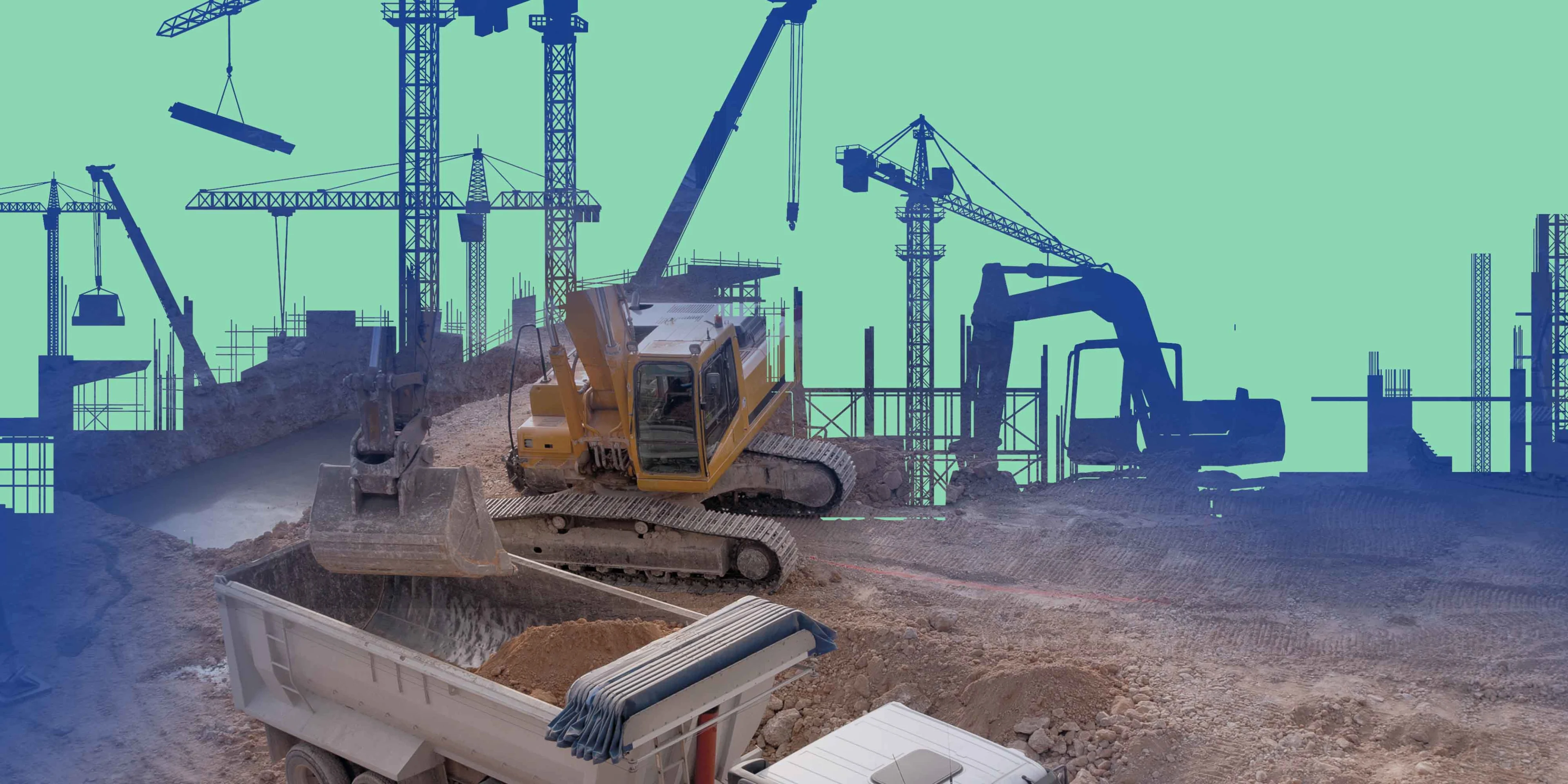
Sustainability
6 minute read
Buildings and construction: the untapped potential to reduce GHG emissions
The built environment is estimated to be the largest contributor to global carbon emissions. Here we zoom in on ways to reduce emissions in the building and construction sector; from the planning and construction of buildings to the operation and renovation, ending with their demolition and recycling.
As the world strives to halt climate change and reduce greenhouse gas (GHG) emissions, the adoption of renewable energy sources and other lower-emission solutions has become imperative, especially in the hard-to-abate sectors like building and construction, which account for 37% of global energy-related carbon emissions.
On the bright side, the sector offers a huge untapped potential to reduce greenhouse gas emissions.
“We need to look at the whole construction when talking about the environmental performance of construction sites, and that starts with the planning process,” says Thomas Budde Christensen, associate professor at Roskilde University in Denmark, who works at the intersection of energy, resources, and waste.
“The way that the sector is operating in Europe leaves big room for improvement. To achieve more sustainability on construction sites, we need to think about how to reduce CO2 emissions, but also how to reuse and recycle existing materials. For example, we can reuse building structures and building materials or crush concrete and use it as a filling for new concrete structures.”
Construction machinery: cutting emissions
In addition to exploring ways to reuse materials and reduce construction waste, while also developing lower-emission alternatives to the currently used construction materials, the industry needs to consider emissions stemming from diesel-operated construction machinery, such as bulldozers or cranes.
Electrification is still largely a buzzword when it comes to heavy machinery. As battery and charging technologies improve, electric machinery may become a good option. But another solution to significantly reduce the carbon footprint on building and infrastructure construction sites is already available today: renewable diesel can simply replace conventional diesel in existing machinery.
Products such as Neste MY Renewable Diesel™ can reduce greenhouse gas emissions by as much as 75 to 95%* over the fuel’s life cycle when compared to fossil diesel. Renewable diesel may also help improve air quality around construction sites as it burns cleaner than conventional diesel.
Renewable solutions: overcoming the challenges
Integrating renewable solutions like renewable diesel into large construction sites does present challenges, however. Often, it requires changes to traditional operating procedures.
“Renewable diesel is a ready-made solution, very easy to switch to, but challenges come from verifying its use,” says Kirsi Liira, Lead for Sustainable Solutions and Partnerships at Neste, adding that this is where a new kind of thinking as well as better data are necessary. “For example, we have an ongoing pilot project in Helsinki [Finland] where we track the use of renewable diesel with RFID tags and collect reliable data to calculate fuel use and emissions generated.”
In addition, most approaches to more sustainable construction are still expensive: renewable diesel is more costly to produce, sustainable materials like wood are often scarce and therefore more costly, and the development of electric heavy-duty machinery and its accompanying charging technology and infrastructure needs more substantial investment.
Finally, political will is key. Cost offsetting from governments can steer towards improving sustainability on construction sites, for example by incentivizing fleet managers to buy renewable diesel for less than the price of conventional diesel. And overall reduction in fuel consumption is another important approach.
The EU City Loops project shows how the circular economy can work in construction and demolition.
Budde Christensen explains: “The first thing that happens at a construction site is that you dig a big hole. Soil often goes under the radar, but it is an important part of sustainability in construction. Currently, we are driving soil away from the site and then back, which means there is a lot of unnecessary transport. With our demonstration projects, we show how to do that better.”
The City Loops project has also come up with a tool for carbon calculation in construction. “I think that the selective demolition legislation is a good starting point,” Budde Christensen adds. “But we also need to better arrange the work at the construction sites in terms of contractual arrangements, economical and planning decisions, and training the people working in construction in sustainable practices.”
Cross-sector partnering for net-zero
Sustainable construction is part of our path towards a net-zero future. For the market to change, there needs to be a clear indication from the buyer, and possible bonuses or sanctions that drive emission reductions. “In Sweden, there are good examples of these kinds of projects. I am so glad that we are working together with our partners to create best practices since I believe that sustainable partnerships are at the heart of what we are doing – helping our customers reduce their greenhouse gas emissions,” says Liira.
She is convinced that cooperation among involved stakeholders at zero- emission sites is key, starting with spreading awareness. Strategic partnerships and pilot projects like City Loops are necessary to support this aspect of the transition to renewable alternatives and circular economy. Stéphane Quefelec, who works in the climate change and energy groups at the European Environment Agency (EEA), explains his vision of future construction sites: “To achieve the EU’s climate neutrality target, reducing CO2 emissions from buildings is critical. At EEA, we approach buildings as a system and by considering their different life stages.”
Energy performance is also an important aspect to consider to decrease emissions. Massive amounts of energy renovations are needed to make existing buildings more energy-efficient - how these actions are carried out, from construction product choices to circular economy practices, is crucial. Hopefully, in 30 years, the construction industry will be transformed, working with low-carbon and energy-efficient products, buildings producing renewable electricity with solar rooftop panels, and contributing to the low-carbon energy system.
With renewable diesel, there is already a solution available to reduce the emissions generated from fuel use in heavy-duty machinery. “I would advise companies to ask for documentation that the selected renewable diesel really lowers CO2 emissions,” suggests Budde Christensen. If that is the case, he is convinced that renewable diesel can be one of several options to make construction sites more sustainable.
Liira concludes: “The time to act and take the first steps towards realizing the potential of renewable energy in construction is now: Renewable diesel already offers one of the answers.” *) The GHG emission reduction varies depending on the region-specific legislation that provides the methodology for the calculations (e.g. EU RED II 2018/2001/EU for Europe and US California LCFS for the US), and the raw material mix used to manufacture the product for each market.
Credits:
Laura Puttkamer, a freelance urban journalist focusing on innovative solutions that make our cities more sustainable and climate-friendly. Originally from Germany, she is based in London and writes for architecture and planning magazines.




